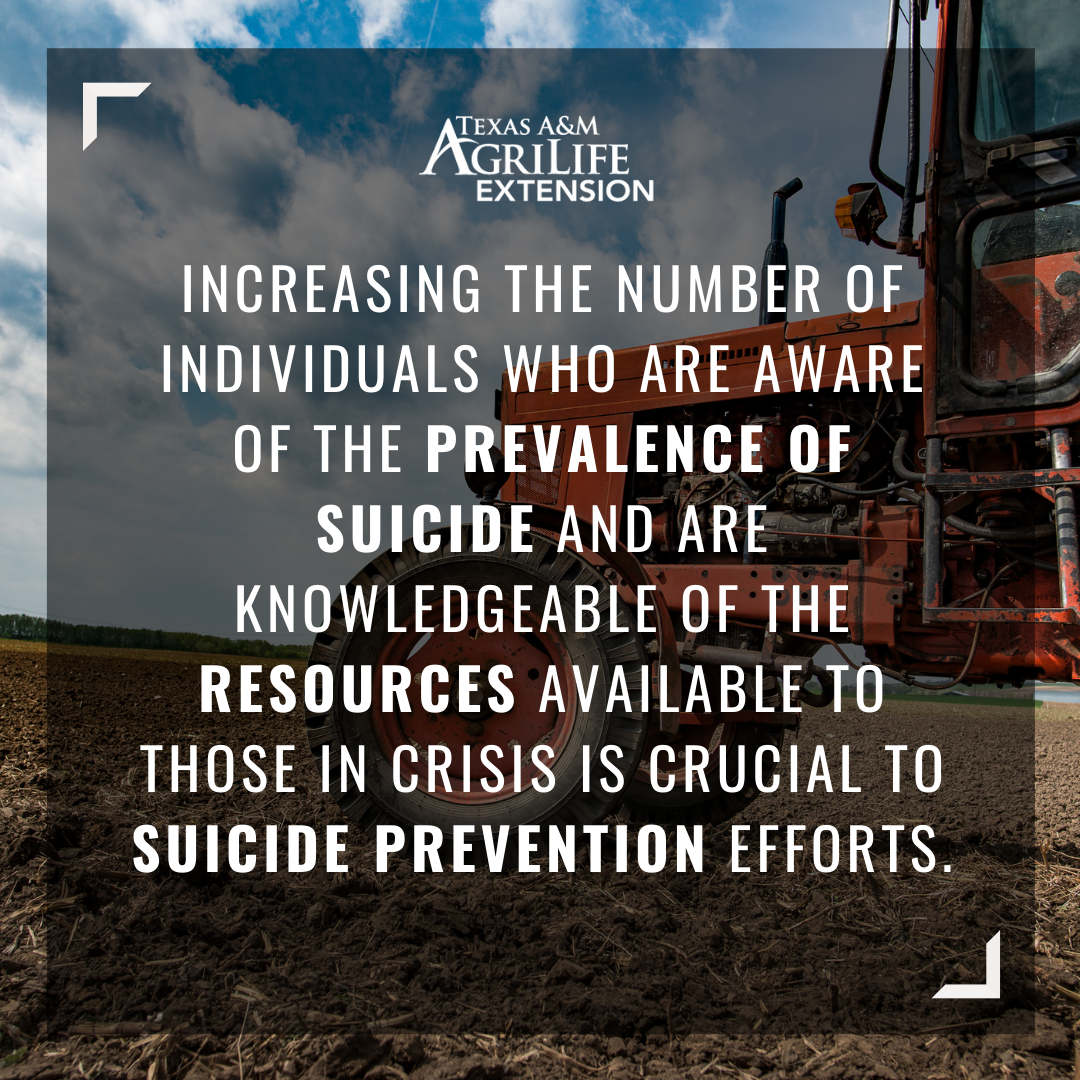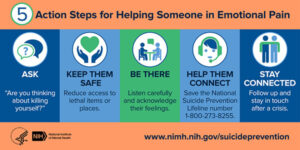September is National Suicide Prevention Month. Below are the main three ways you can educate yourself and others on suicide awareness and prevention efforts.
Understanding the Prevalence of Suicide in the Communities We Serve
The Texas AgrAbility and BattleGround to Breaking Ground projects primarily serve people with disabilities and veterans, respectively. Additionally, our services are aimed to help individuals within these communities start production agriculture businesses. According to the CDC, suicide rates in nonmetropolitan/rural counties are consistently higher than suicide rates in metropolitan counties, regardless of sex, race/ethnicity, age group, and mechanism of death. This is primarily due to lack of mental health care access and firearm availability.
Considering veteran and disability status are also risk factors for suicide, it is extremely important that members of these communities are educated on suicide awareness and prevention efforts.
Learning to Recognize the Warning Signs of Suicide
The first step to identify an individual in crisis is to understand the warning signs that may indicate someone is experiencing suicidal ideation. The Veterans Crisis Line has identified signs that may indicate someone may be experiencing suicidal thoughts:
- Hopelessness, feeling like there’s no way out
- Anxiety, agitation, sleeplessness, or mood swings
- Feeling like there is no reason to live
- Rage or anger
- Engaging in risky activities without thinking
- Increasing alcohol or drug abuse
- Withdrawing from family and friends
In addition to signs that require immediate attention:
- Thinking about hurting or killing yourself
- Looking for ways to kill yourself
- Talking about death, dying, or suicide
- Self-destructive behavior such as drug abuse, weapons, etc.
The NIH has also identified 5 action steps you can take to help someone in emotional pain:
Additionally, trainings are available to teach participants how to respond to someone in crisis and equip them with knowledge of suicide prevention opportunities in their communities. National trainings such as Question, Persuade and Refer (QPR) and safeTALK Suicide Alertness Training may be available for you to access. At a local level, the Texas A&M AgriLife Extension Service and Mental Health First Aid in Rural Texas will offer a series of free two-day mental health first aid trainings monthly beginning Sept. 28-29 and ending in February.
Gaining Knowledge of the Resources Available for Suicide Prevention
Lastly, it is important to note that trained professionals are best equipped to help individuals at risk for suicide.
ARTillery Ave Farm recently created an Instagram post with several resources to help veterans who are experiencing crisis, including:
- VA Crisis Line: 1-800-273-8255
- Veterans Crisis Text Line: Text 838255
- VA Women Veterans Call Center: Call or text 1-855-829-6636
- M-F 8AM-10PM & SAT 8 AM-6:30PM ET
- VA Caregiver Support Line: Call 1-855-260-3274 (M-F 8AM-10PM & SAT 8 PM-5PM ET)
- Vet Centers: Discuss how you feel with other Veterans in community-based counseling centers. 70% of Vet Center staff are Veterans. Call 1-877-927-8387 or find one near you.
- VA Mental Health Services Guide: Guide to VA Mental Health Services for Veterans & Families
Additionally, here are some general mental health resources that may be helpful for different communities:
- First-Responders’-Trauma-Intervention-Resource-Toolkit.pdf
- Home — Boulder Crest Foundation
- From PTSD to PTG: An Introduction to Posttraumatic Growth (PTG)
- https://agrilifeextension.tamu.edu/library/health-nutrition/farm-families-and-mental-health/
- https://agrilifeextension.tamu.edu/library/health-nutrition/farm-families-and-mental-health/
- VA App Store | VA Mobile
Increasing the number of individuals who are aware of the prevalence of suicide and are knowledgeable of the resources available to those in crisis is crucial to suicide prevention efforts.


